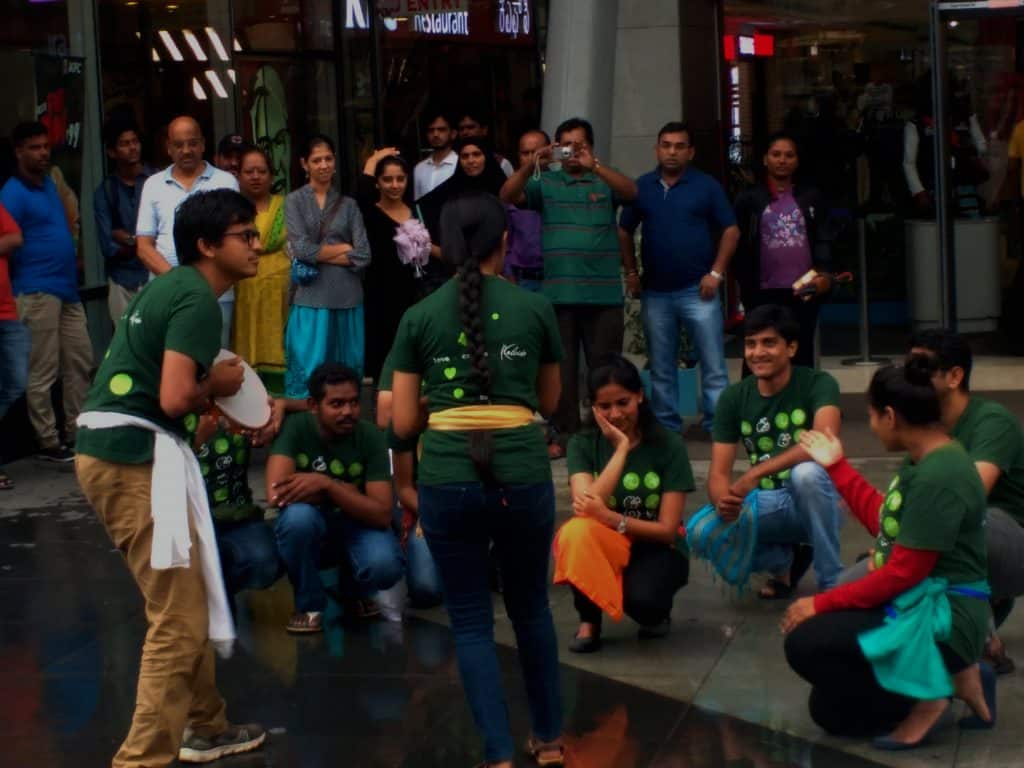Do you remember the famous wedding video invite with a LED display which had the family lip-syncing to a choreographed welcome song and dance? Ever wondered what happened to the card after the wedding? This was the storyline for the Street play performed by Kaledio to raise awareness on e-waste.
How long does anyone hang on to an invite that has run out of battery? It goes in the garbage. And the performers went on to explain the hazards of e-waste. E-waste is extremely harmful to both human and environmental health. The toxic elements that e-waste contains include chromium, lead, arsenic, and Mercury among others. All these impact human health directly when these elements enter the soil, water or air are inhaled or ingested by us.

These also directly cause air and water pollution impacting other natural systems. This performance engaged many citizens who visited Forum Mall on Sunday. Many citizens showed interest and collected details of the collection centers.
Can you believe that by 2020 India’s e-waste from old mobiles and computers will rise by about 1,800 percent and 500 percent respectively as compared to the levels in the year 2007? Yes, it is, according to an ASSOCHAM-KPMG joint study. In this January, Ensyde, in collaboration with Saahas, launched the bE-Responsible initiative, for Environmentally Responsible Collection and Recycling of e-waste in Bengaluru. More details on this initiative can be found here.
Through this initiative, they are creating awareness among citizens about safe disposal of e-waste. The awareness program has been conducted in households and institutions (schools, colleges, hospitals, offices, retail, etc.) through workshops, campaigns, presentations, emails, and social media. The awareness drive is supported by the on-ground collection system which includes door-to-door collection drives, drop off boxes at Bangalore One Centres and a mobile collection van.